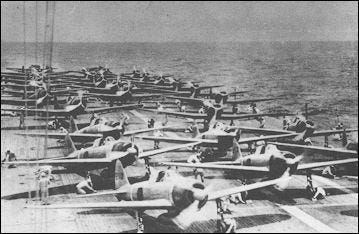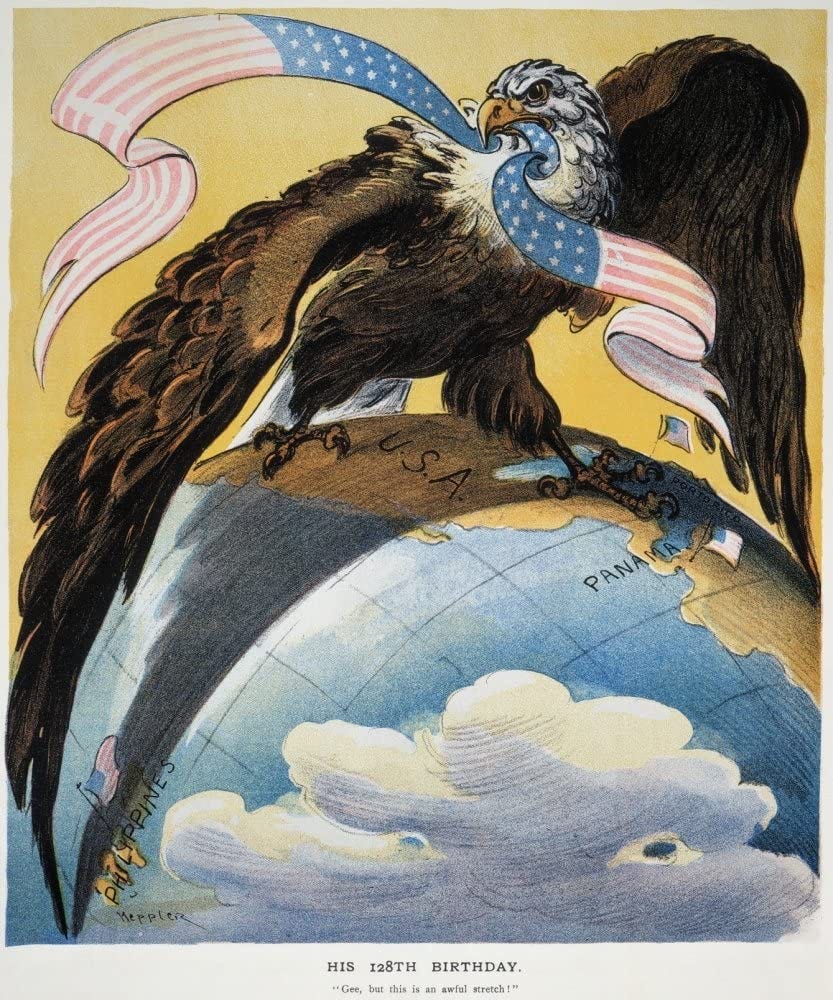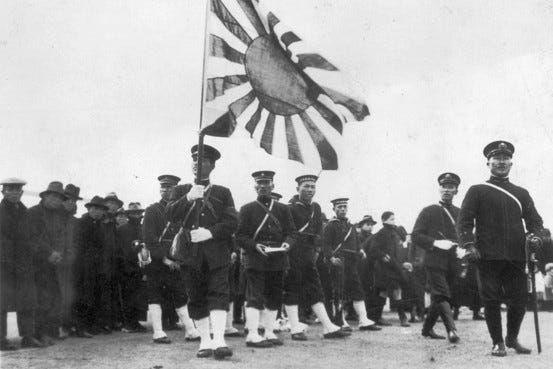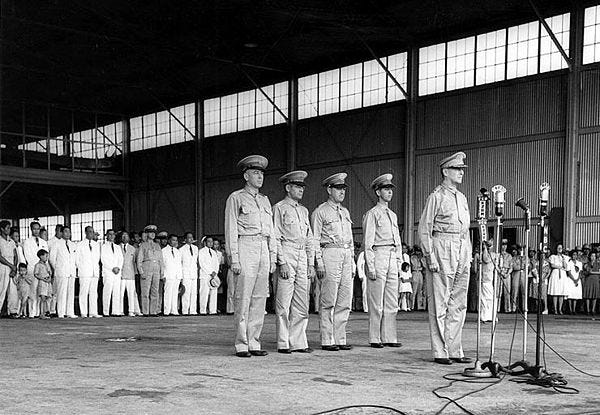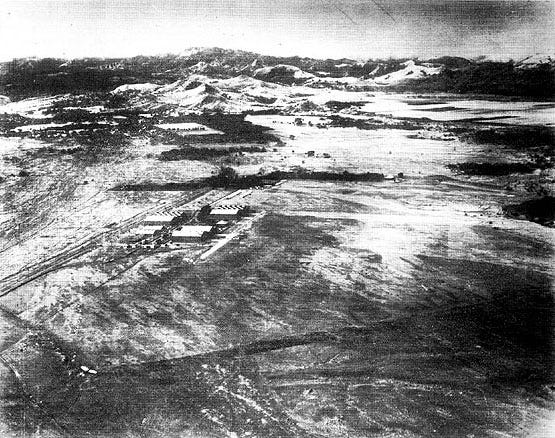Introduction
December 8th, 1941. Nine hours ago, the Imperial Japanese Navy had launched an attack on the United States Naval base called Pearl Harbor in Hawaii. The Japanese surprise attack on America had created a state of war between the two countries and expanded the fighting of World War II. Over 17,000 kilometers away from the American mainland (and less than 3,000 kilometers from Tokyo), a United States military force made up of American and Philippine soldiers were anxious as they looked up at the sky and listened to their radios. They knew a Japanese attack was coming soon. They knew that there was not enough soldiers, not enough weapons, and not enough resources to defend the Philippines from a Japanese attack. They knew that a battle was coming. And they knew that they would lose that battle. Soon, 108 bombers and 84 fighters of the Imperial Japanese Navy would arrive over the skies of Luzon, the northernmost main island of the Philippines. The Americans and Filipinos were not prepared.
But how did this happen? Why were Japanese and Americans fighting over this Southeast Asian nation made up of over 7,000 islands?
Philippine Prehistory and the Spanish
2200 BCE - 1868 CE
For a long time, the Philippines was not a country. Just look at it’s name. It clearly comes from the name “Philip,” a name that is native to Europe. This is because the Philippines originally had no name. As a collection of isolated islands, the Philippines was home to a variety of cultures and languages with the most dominant being the Tagalog people of the Maynila Kingdom on the island of Luzon. The people of the Philippines were Austronesians, a group of people I’ve talked about many times before (like in Chapter 5 of Lost Historian’s History of Japan). In short, the Austronesians were people who left the island of Taiwan around 2200 BCE on boats and brought rice farming to a vast area in an event known as the “Austronesian Expansion.” One of the earliest places the Austronesians came to was the Philippines where they spread out, mixing with the local people (relatives of the modern-day Negrito population of the Philippines) and creating various ethnic groups like the Tagalog. These different groups created their own tiny states and kingdoms that fought each other or befriended each other. In the historical period, other regions and cultures would invade and conquer some of these kingdoms or influence them, specifically Indonesian and Indian kingdoms. The Brunei Sultanate also took over much of the south and western portions of the Philippines, spreading the religion of Islam in the south.
By the 1500s, Europe had entered the Age of Exploration and Spanish sailors discovered the Philippines, naming the islands after King Philip II of Spain. However, the Filipinos were able to repulse Spanish explorers in 1521 and Spain decided to focus on expanding its empire in North America and South America. The Spanish did not return until 1565 when they launched a long conquest of the Philippines, conquering Maynila in 1570, and finally ending with the Filipinos accepting a referendum to become part of the Spanish Empire in 1599.
Initially, the Spanish soldiers settled in the Philippines where they were oppressive and violent, even going as far as to enslave Filipinos even though slavery had already been abolished in the Spanish Empire. However, Catholic priests were more friendly to the Filipinos and opposed the Spanish soldiers’ mistreatment of them. Many Spanish settlers came from Spanish Mexico to settle in the Philippines and many of them sided with the Catholic clergy over the Spanish military, pushing for friendly relations with the Philippines. Many Filipinos were grateful for the humanitarian work from the Catholics and the Catholic religion quickly spread throughout the Philippines alongside elements of the Spanish culture and language. Meanwhile, the largely Muslim areas maintained their Muslim identity and fiercely resisted the Spanish Empire. In opposition to the violence seen in the Muslim communities of the Philippines, it seems many Christian Filipinos sided with the Spanish against their own Muslim countrymen.
And so Spanish rule continued for hundreds of years.
War for Independence
1868 - 1913
In 1868, Spain experienced a revolution that overthrew its king and created a republic. In this era of Spanish Liberalism, Spain decided to govern the Philippines more fairly, sending a liberal governor who gave the Filipino people more freedom and stability. The Filipinos loved their new governor. It was during this time of happiness that the Filipinos finally accepted the identity of one group and as one Philippines. However, things changed in 1874 when the Spanish royal family took back power, overthrowing the liberal republic. The restored Kingdom of Spain fired the liberal governor of the Philippines and began bringing back the strict and harsh, oppressive government over the Philippines and even executed Catholic priests who tried to defend the Filipinos. In response, many in the Philippines began to want to become independent. Spain, hoping to get rid of these separatists to prevent a war of independence in the Philippines, began to deport many of these troublemakers to places like Europe, the Americas, and the Mariana Islands (like Saipan). This only made the problem worse and, by 1896, a group of Filipinos created an army and declared the independence of the Philippines against Spain. In the Philippine War of Independence, the Spanish clashed with the Filipinos until 1898 when the war expanded into the Spanish-American War.
The Spanish-American War broke out for various reasons that aren’t very important for this World War II-related story here. The important thing to know is that American soldiers arrived in the Philippines and the Americans and Filipinos worked together to fight the Spanish. The Americans even promised that the Philippines would receive independence after the war. However, the Spanish forces were soon surrounded in Manila, the final battle of the Spanish-American War. The United States suspiciously ordered the Philippine revolutionaries to not enter Manila. The Filipinos stood back and watched the United States defeat the Spanish and occupying the Philippine capital city. Then, to the dismay of the Filipinos, the United States announced that it would be annexing the Philippines for itself instead of giving the Philippines independence. The Filipino revolutionaries around Manila instantly attacked the American-occupied city (and they lost the battle with many Filipino deaths). The Philippine War of Independence against Spain was over. The Philippine-American War had begun, a war that lasted over three years, destroying the Philippines with famine, disease, fires, and 200,000 civilians dead. America even created concentration camps that resulted in the deaths of thousands of civilians. In the end, the United States was victorious and the Philippines was forced to submit to the Americans. America disestablished the Catholic Church and began to bring Protestantism to the Philippines as well as the English language. America forced English onto the Philippines in their government, education system, and businesses which effectively transformed the Philippines into an English-speaking nation. While the Christian population of the Philippines had been pacified, the United States continued a war against Muslim resistance in the south during the Moro Rebellion that continued until 1913.
Jewel of the American Empire
1913 - 1935
Despite the radical transformation of Filipino culture, other reforms the United States placed on the Philippines improved the nation for the better. America did something Spain had failed to do which was the abolishment of slavery. Piracy, which had been a problem for all of the Philippines’ history, was also outlawed as well as America sought to protect the shipping and free trade between the Philippines and the American mainland. That being said, discontent still existed inside the Philippines. As the Philippines become more of a bilingual society due to the introduction of English, the Tagalog language also became more widely-spoken in the Philippines as a way to unite the Philippines in the struggle for independence. Local languages and dialects continued outside of the Tagalog homeland of central Luzon, however.
During World War I, the Filipinos briefly paused their anti-American, pro-independence rhetoric to provide support to the United States. After the war ended, the Philippines promptly made its intentions clear in 1919 as the local Philippine Assembly stated that it was their intention to achieve independence. The concept of an American Empire was a controversial and unpopular idea with the American people even when the Philippines were annexed in 1898. After all, the very basis of American identity was born as a separatist movement against the British Empire that was solidified with the American Declaration of Independence in 1776 and the internationally recognized independence of the United States in 1783. As time had continued, the Americans who supported controlling the Philippines directly decreased. However, there were still some American interests in retaining influence in the Philippines.
In 1933, the United States congress passed the Hare-Hawes-Cutting Act. The Act promised to give the Philippines independence in 1943 so long as America could keep several military bases in the Philippines and Philippine imports to the United States would be subject to tariffs and quotas. After all, keeping the Philippines hurt American farmers who had to compete with the agricultural goods the Philippines produced (especially sugar). President Herbert Hoover vetoed the Act but the Act had enough support from the American congress that the Act passed anyway. However, when the act was brought to the Philippine Assembly, the Philippines realized that the continued American military presence and the loss of the free trade status with America would not be a good situation and promptly rejected the act. In the defense of the American farmers during America’s economic slump, the American Congress drafted up a new act by 1934 known as the Tydings-McDuffie Act. This act provided for the independence of the Philippines in 1944 and to reduce the American presence in the islands. This was a deal that the Philippine Assembly readily accepted.

And so, the Philippines became busy with a planned ten-year transition to independence as a constitution was written that created the Commonwealth of the Philippines and a new government that was to take over the Philippines once independence was achieved. On its part, the United States began to withdraw from the Philippines until only 10,000 American soldiers were present with very few supplies and no battlefield-use military vehicles to speak of. The police force of the Philippines would be given the task of defending the Philippines from outside threats.
The Coming War
1935 - 1941
The Americans and the Filipinos has no idea what was coming. If they did, they probably wouldn’t have demilitarized the Philippines like they did.
The whole world was on the path to war as Germany, Italy, and Japan disrupted the world order and went on to establish the Tripartite Pact. While France and the United Kingdom struggled to keep Germany from expanding any further and while the League of Nations continued to condemn Italy for building an empire, the United States watched on in concern as Japan invaded Manchuria in China in 1931, occupied the internationally important city of Shanghai in 1932, and launched a full-scale invasion of China in 1937. The United States and Japan historically had an unstable and poor relationship ever since Commodore Perry threatened Japan with annihilation in 1853. Despite multiple attempts to prove itself as a worthy nation to the United States and the West in general, American interests in securing the Pacific, holding naval superiority in the region, and having secure access to Asian markets led to America questioning Japan’s expansion. Meanwhile, Japan was becoming more and more distrustful of the European-American countries as they built up empires around Japan. During the Edo Period, Russia had secured the Russian Far East. Britain had built up an empire that included India, Malaysia, Hong Kong, and Singapore. The French held Vietnam, Laos, and Cambodia while the Portuguese took Macau and East Timor. Even the Netherlands had a piece, occupying the massive island chain of Indonesia. Of course, the United States had seized the Philippines in 1898. In the end, incidents in the Siberian Intervention (1918-1922), American rejection of the Racial Equality Proposal in 1919, and the later Washington and London Naval Treaties (1922 and 1930) resulted in Japan seeing the United States and the European empires as enemies that it would have to fight in the future.
In 1939, was began in Europe between France and Britain against Germany and Italy. Like the previous world war, the Netherlands was also brought into the conflict when it was defeated in a quick German invasion in 1940. France also fell to this invasion and the once great French Empire lost territory and dignity and true self-sovereignty to Germany. Interested in seizing French Indochina for its resources to support the Second Sino-Japanese War, Japan and France came to the agreement that Japan could occupy portions of Indochina. French soldiers resisted the Japanese invasion but Japan won and seized Indochina. To the United States, the Japanese seizure of Indochina was a sign that war with Japan was coming. By controlling Vietnam, Japan was now dangerously close to the Philippines.
The United States quickly made preparations. The resource-poor Japan relied on American oil from trade to feed itself and to continue the invasion of China. Seeking to deter further Japanese expansion and aggression, the United States announced an oil embargo on Japan, a critical decision that would later push Japan towards war with the United States and the West (along with other factors such as the Japanese confidence that they could win a war with the West and the understanding that Japan would remove the Europeans and Americans from Asia one day anyway).
With the Philippines in a dangerous situation, the United States quickly acted. The United States Army re-organized itself and announced that the young Philippine Army would become part of the American Army and under American commanders. At the head of this new army, a retired general named Douglas MacArthur was brought back into the service to command the Philippine Army. MacArthur’s father was an American officer who led American troops in the Philippine-American War and Douglas MacArthur himself fought some Filipino rebels in 1903. He had fought in the 1914 American invasion of Mexico and later in Europe in World War I. He was an accomplished soldier who had experience both in the Philippines and in Japan as well (After the Russo-Japanese War in 1905, he and his father were sent to Nagasaki, Kobe, and Kyoto to inspect Japanese military bases). MacArthur found himself in command of a very small American and Filipino military force. This army had very little equipment, poor clothing, rubber boots that wore out in just two weeks, and a shortage of blankets, shovels, gas masks, and helmets. MacArthur put in an order for more supplies but he was told that guns and equipment were being sold to the United Kingdom to prevent Germany from occupying the island nation. The Filipino Army was poorly trained and some had never fired their weapon. Communications officers had issues trying to connect their radios to their units. There was a language barrier in the army as the American command spoke English, the officers spoke Tagalog, and the enlisted troops spoke local languages like Bikol or Visayan. Some soldiers were expected to read or write down orders even though they could not read or write. Filipina women were in charge of communication lines between stations but their service was unreliable. According to a Filipino officer, the only thing his Filipino soldiers could do was stand at attention when told and demand three meals a day. It was clear to MacArthur that he was not in a good situation.
Meanwhile, over ten divisions of experienced Japanese soldiers from the China campaign were stationed on Taiwan in preparation to invade the Philippines.
Clark Field
December 8th, 1941
On December 8th, 1941, General MacArthur learned that Japan had launched a surprise attack on Pearl Harbor. A state of war existed between Japan and the United States. And MacArthur was in no situation to defend the massive Philippine coastline from a Japanese invasion. American reinforcements would take a long time to arrive, if they ever could. Japanese reinforcements could come significantly faster. However, what MacArthur did have was a relatively large air force, especially in northern Luzon at Clark Field. He had war plans that said that if war between Japan and America began, the planes at Clark Field were to depart for the Japanese island of Taiwan to raid Japanese air and military stationed there. The first Japanese planes from Taiwan arrived at attacked the American ship USS William B. Preston in Davao Bay, confirming that the Philippines was a target and that a larger attack was incoming. MacArthur ordered the planes at Clark Field to take off for Taiwan. However, due to miscommunication, this attack never happened.
Instead, Japanese air forces soon arrived over Luzon, attacking Clark Field and other airfields in the area. The Philippines’ best military advantage was the fact that it put the Americans in range of Taiwan, the first step to reaching the Japanese mainland. That advantage was blown up on Clark Field that December day in 1941. Meanwhile, a Japanese landing force took the island of Batan (not Bataan) in the far north of Luzon. 100,000 more Japanese soldiers were coming from Taiwan for the main event. From the attack on American naval forces, the air raid on Clark Field that destroyed the American/Philippine air force, and the landing and occupation of Batan, December 8th was the beginning of the end. All the while, the Allied soldiers heard reports of the Japanese invading British Malaya, bombing Midway Island and Singapore, invading Thailand before forcing Thailand into an alliance, an invasion of Indonesia, Guam, Wake Island, and Hong Kong alongside an American, British, and other Allied declarations of war upon Japan.
The Philippines was right in the middle of a world war with very little preparation.
To be continued whenever I have time.



